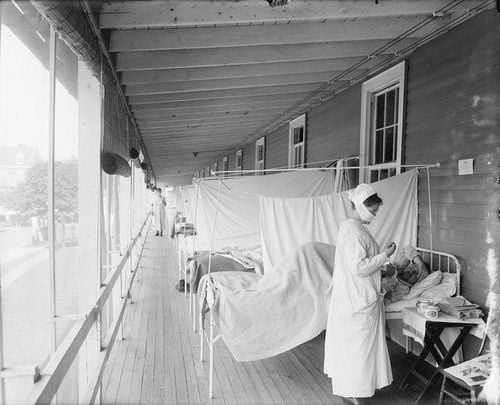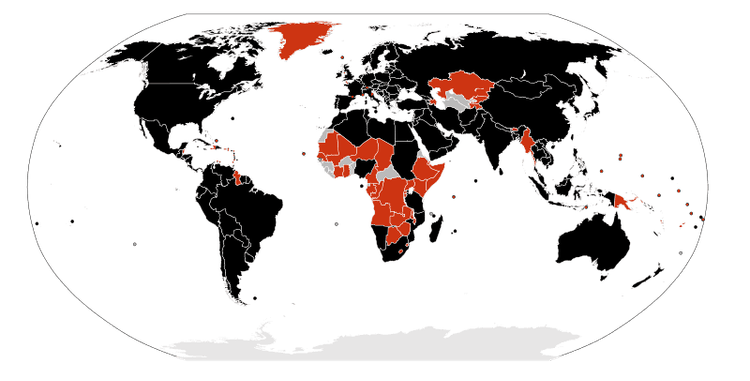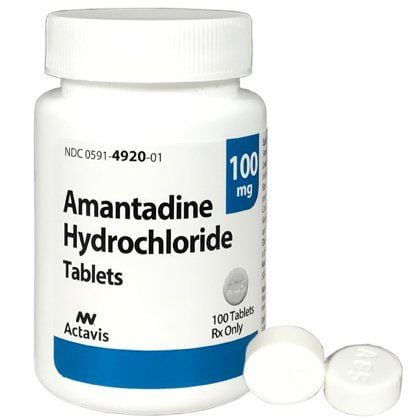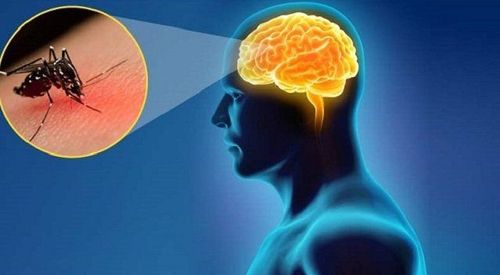This is an automatically translated article.
Pandemic occurs when new influenza viruses emerge and are easily transmitted from person to person. Below is a historical timeline of influenza as well as historical timelines of medical and public health events in flu prevention.
1. Seasonal Flu of the 1930s
Influenza virus was isolated from humans, which proves that influenza is caused by a virus and not by bacteria.
Influenza is a highly contagious disease. The name flu originated in 15th century Italy from an epidemic. The first pandemic or worldwide pandemic clearly fits the description of influenza in 1580. At least four influenza pandemics occurred in the 19th century, and three occurred in the 20th century. The Spanish flu epidemic of 1918-1919 caused about 21 million deaths worldwide. The first pandemic of the 21st century occurred in 2009-2010.
Smith, Andrewes and Laidlaw isolated influenza A virus from ferrets or ferrets in 1933 and Francis isolated influenza B virus in 1936. In 1936, Buret discovered that influenza viruses can cultured on egg embryos. This led to the study of virus properties and the development of inactivated vaccines.
2. Seasonal Flu of the 1940s
Thomas Francis, Jr and Jonas Salk serve as principal researchers at the University of Michigan to develop the first inactivated influenza vaccine with support from the US Army. Their vaccine using egg embryos is similar to the methods still used to make most flu vaccines today. This initial vaccine covers only the inactivated influenza A virus. Along with that, the first-generation ventilator was also developed. These machines help to assist breathing in patients with respiratory complications.
In 1940 influenza B virus was discovered. In 1942 a two-component vaccine that protected against influenza A and influenza B viruses was produced following the discovery of influenza B virus. In 1944, cell cultures were used to grow the virus. This allows the virus to be cultured outside the body for the first time. The ability to culture influenza viruses from respiratory secretions allows for the diagnosis of influenza. In 1945, an inactivated influenza vaccine was approved for civilian use. In 1947, during a seasonal flu pandemic, investigators determined that changes in the antigenic composition of circulating influenza viruses had rendered the current vaccine ineffective. This further highlights the need for continuous monitoring and characterization of circulating influenza viruses. In 1948, the World Health Organization (WHO) Flu Center was established at the National Institutes of Medical Research in London. The main tasks of the organization are to collect and characterize influenza viruses, develop laboratory diagnostic methods for influenza virus infections, and establish a network of laboratories and disseminate accumulated data from their investigations.
3. Seasonal Flu of the 1950s
In 1952, the Global Influenza Surveillance and Response System (GISRS) was established by WHO to monitor the evolution of influenza viruses. The original GISRS network consisted of 26 laboratories. In 1956, the Atlanta branch of the Centers for Disease Control and Prevention (CDC) was designated a WHO Collaborating Center for Influenza Surveillance, Epidemiology, and Control. In 1957, a new H2N2 influenza virus appeared, causing an outbreak of disease with about 1.1 million deaths globally, about 116,000 in the United States.

Cúm mùa những năm 1950 mang tên H2N2
4. Seasonal Flu of the 1960s
In 1960, in response to the significant morbidity and mortality during the 1957 pandemic, the U.S. Surgeon General recommended an annual influenza vaccination for people with chronic debilitating illnesses who were 65 years of age or older, and pregnant women. In 1961, there was an outbreak in South Africa with wild birds becoming reservoirs of influenza A virus. In 1962, the Centers for Disease Control and Prevention (CDC) reported the number of deaths due to the disease in the country. 122 cities across the United States. Every week, the office will compile important information such as the number of people infected with pneumonia or flu, the number of deaths from infection of these 122 cities. This system was dissolved in October 2016. In 1966, the Food and Drug Administration approved amantadine - A new antiviral drug as a prophylactic against influenza A. It is not effective against influenza B. In 1967, Dr. H.G.Pereira and colleagues proposed a relationship between humans and avian influenza viruses. After the study showed an antigenic relationship between the 1957 human flu pandemic and the influenza A virus isolated in turkey. The study questioned and investigated whether the human influenza virus originated in poultry. In 1968, a new H3N2 influenza virus emerged that caused another pandemic that resulted in about 100,000 deaths in the United States and 1 million worldwide. Most of the deaths were in people 65 years of age and older. The H3N2 virus circulating today is a descendant of the H3N2 virus that appeared in 1968.
5. Seasonal Flu of the 1970s
An outbreak of influenza (swine flu) occurred among recruits at Fort Dix, leading to a vaccination program to contain the epidemic. Within 10 months, about 25% of the US population had been vaccinated, about double the level needed to provide those at risk.
In 1981, the Centers for Disease Control and Prevention began collecting influenza outbreak reports from epidemiologists in territories and states.
6. Seasonal Flu of the 1990s
In 1993, the Vaccines for Children (VFC) program was established due to the measles outbreak to provide free vaccines to children whose parents or guardians could not afford to pay. . In 1994, Rimantadine, derived from amantadine, was approved by the FDA for the treatment of influenza A In 1996, an avian influenza H5N1 virus was isolated for the first time from domesticated geese in China. In 1997, the first human influenza A (H5N1) infection was identified in Hong Kong. In addition, a web-based influenza monitoring tool, Flu.net, was also released by WHO. It is an important tool for tracking the movement of influenza viruses around the globe. Country data is updated weekly and publicly available. In 1998, swine influenza virus surveillance was conducted by the United States Department of Agriculture. A hybrid virus between avian, avian and swine influenza viruses has been detected in pigs. The virus became the most common swine flu virus in the United States in 1999. In 1999, the WHO's influenza pandemic preparedness plan was published, emphasizing the need for enhanced influenza surveillance, along with the need for production. and distribute vaccines or antiviral drugs. Concurrent influenza research and emergency preparation the neuraminidase inhibitors oseltamivir (Tamiflu) and zanamivir (Relenza) are licensed for the treatment of influenza infection.
7. Seasonal flu in the 2000s
April 2000, The Advisory Committee on Immunization Practices (ACIP) recommends that children 6 to 23 months of age get vaccinated each year to protect against and against influenza. In 2003, public health officials were concerned about a recurrence of H5N1 bird flu reported in China and Vietnam. In June 2003, the first nasal spray flu vaccine was licensed. In 2004, the National Incident Management System (NIMS) was established to coordinate responses to public health incidents. In 2005, the US government's national strategy for pandemic influenza was published. Whole genome of pandemic influenza virus of 1918 sequenced. In 2006, CDC stopped recommending adamantanes for 2005-2006 after high levels of resistance among influenza A viruses. In the US, resistance increased. from 1.9% in the 2003-2004 season to 11% in the 2004-2005 season. National strategy on influenza pandemic implementation plan published. The document outlines the United States' preparedness and response to prevent the spread of the pandemic. In 2007, the American Veterinary Medical Association (AVMA) established the One Health Initiative task force. The American Medical Association unanimously passed a resolution calling for increased cooperation between the human and veterinary medical communities. FDA approved the first human vaccine against influenza A (H5N1) virus in the United States. In 2008, ACIP expanded its influenza vaccination recommendation to include immunization for children 5-18 years of age. CDC receives Food and Drug Administration approval for a highly sensitive polymerase chain reaction (PCR) test. These tests can detect influenza with high specificity, helping to enhance diagnosis and treatment options. On April 17, 2009 a new H1N1 virus was discovered in the United States. The CDC has begun working to develop a virus that can be used to create a protective vaccine against this new virus. On 25 April 2009, WHO declared a public health emergency of international concern. On June 11, 2009, WHO officially declared a new 2009 influenza pandemic. CDC began conducting research on H1N1 flu that lasted more than a year. Doctors have used rapid point-of-care immunoassays to provide flu results within 15 minutes of a pandemic flu outbreak. On October 5, 2009, the first dose of pandemic influenza vaccine was developed.

Đại dịch cúm 2009 bùng phát đầu tiên ở Hoa Kỳ
8. Seasonal flu in the 2010s
On August 10, 2010, WHO declared an end to the 2009 H1N1 flu pandemic. And ACIP recommends an annual flu shot for children 6 months of age and older. In 2012, a vaccine containing a cell cultured virus became available. However, eggs are still the primary vehicle for cell culture. Cell culture methods are used to produce vaccines. In 2014, the FDA approved peramivir (Rapivab) to treat influenza in adults. This is the first IV flu medicine. In 2017, CDC updated guidance on the use of non-pharmaceutical measures to help prevent the spread of influenza based on the latest scientific evidence. Here are actions individuals and communities can take to help slow the spread of the flu like self-isolating at home when sick, covering coughs or sneezes, and frequently washing hands with soap. . Vaccine Center - Vinmec Times City International Clinic and Vinmec International Hospital and Clinic provide flu vaccination services. The advantages of vaccination at Vinmec include:
A team of specialist doctors examine and screen all health and physical problems. Advice on preventive vaccines, injection regimens, how to monitor and care for children after vaccination before giving an indication for vaccination. 100% of vaccinated customers are monitored 30 minutes after injection and reassessed before leaving. Undertake medical supervision before, during and after vaccination at Vinmec Health System and always have an emergency team ready to coordinate with the vaccination department to handle cases of anaphylaxis, respiratory failure - circulatory arrest, ensuring Ensure timely and correct handling when incidents occur. The vaccination room is cool, clean and quiet. Vaccines are imported and stored in a modern cold storage system, with a cold chain that meets GSP standards, keeping vaccines in the best conditions to ensure quality. Parents will receive a reminder message before the vaccination date and their child's vaccination information will be synchronized with the national immunization information system. If you need to inject individual vaccines or receive a package of vaccines, please contact the hotline of Vinmec Hospitals or Clinics nationwide or refer to the appointment booking information HERE. .
Reference source: .cdc.gov.













